Frank Sanfilippo
Analysis and Evaluation of Explainable Artificial Intelligence on Suicide Risk Assessment
Mar 09, 2023Abstract:This study investigates the effectiveness of Explainable Artificial Intelligence (XAI) techniques in predicting suicide risks and identifying the dominant causes for such behaviours. Data augmentation techniques and ML models are utilized to predict the associated risk. Furthermore, SHapley Additive exPlanations (SHAP) and correlation analysis are used to rank the importance of variables in predictions. Experimental results indicate that Decision Tree (DT), Random Forest (RF) and eXtreme Gradient Boosting (XGBoost) models achieve the best results while DT has the best performance with an accuracy of 95:23% and an Area Under Curve (AUC) of 0.95. As per SHAP results, anger problems, depression, and social isolation are the leading variables in predicting the risk of suicide, and patients with good incomes, respected occupations, and university education have the least risk. Results demonstrate the effectiveness of machine learning and XAI framework for suicide risk prediction, and they can assist psychiatrists in understanding complex human behaviours and can also assist in reliable clinical decision-making.
Inflating 2D Convolution Weights for Efficient Generation of 3D Medical Images
Aug 08, 2022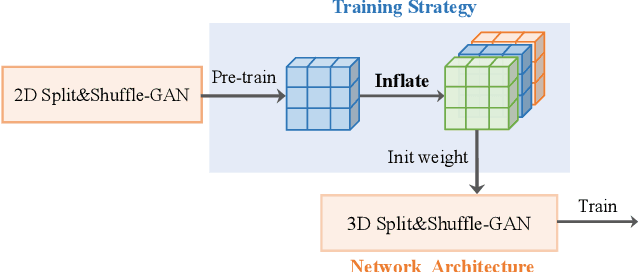
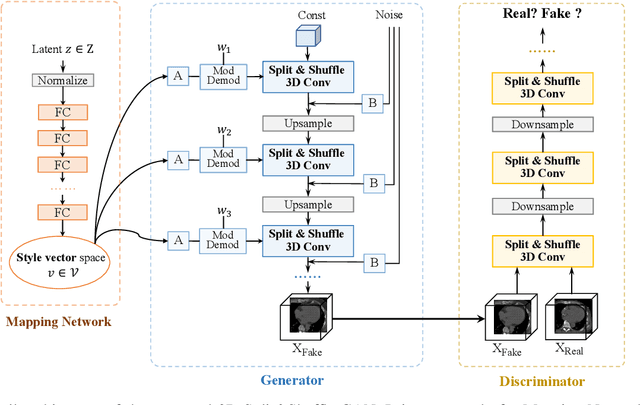
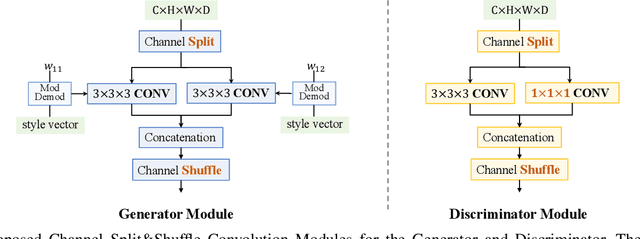

Abstract:The generation of three-dimensional (3D) medical images can have great application potential since it takes into account the 3D anatomical structure. There are two problems, however, that prevent effective training of a 3D medical generative model: (1) 3D medical images are very expensive to acquire and annotate, resulting in an insufficient number of training images, (2) a large number of parameters are involved in 3D convolution. To address both problems, we propose a novel GAN model called 3D Split&Shuffle-GAN. In order to address the 3D data scarcity issue, we first pre-train a two-dimensional (2D) GAN model using abundant image slices and inflate the 2D convolution weights to improve initialization of the 3D GAN. Novel 3D network architectures are proposed for both the generator and discriminator of the GAN model to significantly reduce the number of parameters while maintaining the quality of image generation. A number of weight inflation strategies and parameter-efficient 3D architectures are investigated. Experiments on both heart (Stanford AIMI Coronary Calcium) and brain (Alzheimer's Disease Neuroimaging Initiative) datasets demonstrate that the proposed approach leads to improved 3D images generation quality with significantly fewer parameters.
Performance of multilabel machine learning models and risk stratification schemas for predicting stroke and bleeding risk in patients with non-valvular atrial fibrillation
Feb 02, 2022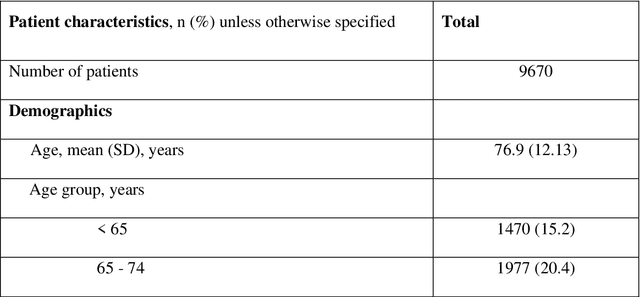
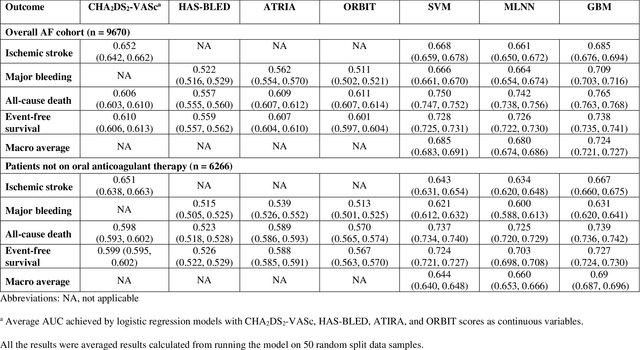
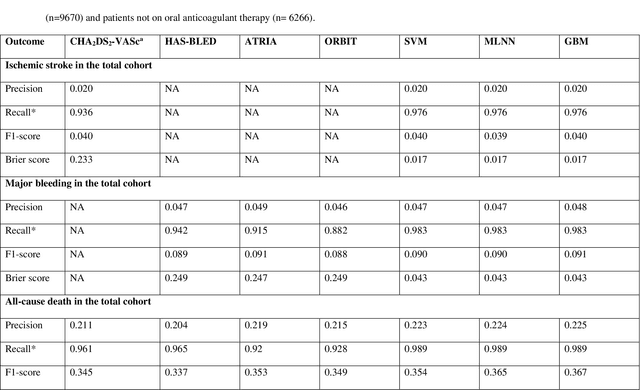
Abstract:Appropriate antithrombotic therapy for patients with atrial fibrillation (AF) requires assessment of ischemic stroke and bleeding risks. However, risk stratification schemas such as CHA2DS2-VASc and HAS-BLED have modest predictive capacity for patients with AF. Machine learning (ML) techniques may improve predictive performance and support decision-making for appropriate antithrombotic therapy. We compared the performance of multilabel ML models with the currently used risk scores for predicting outcomes in AF patients. Materials and Methods This was a retrospective cohort study of 9670 patients, mean age 76.9 years, 46% women, who were hospitalized with non-valvular AF, and had 1-year follow-up. The primary outcome was ischemic stroke and major bleeding admission. The secondary outcomes were all-cause death and event-free survival. The discriminant power of ML models was compared with clinical risk scores by the area under the curve (AUC). Risk stratification was assessed using the net reclassification index. Results Multilabel gradient boosting machine provided the best discriminant power for stroke, major bleeding, and death (AUC = 0.685, 0.709, and 0.765 respectively) compared to other ML models. It provided modest performance improvement for stroke compared to CHA2DS2-VASc (AUC = 0.652), but significantly improved major bleeding prediction compared to HAS-BLED (AUC = 0.522). It also had a much greater discriminant power for death compared with CHA2DS2-VASc (AUC = 0.606). Also, models identified additional risk features (such as hemoglobin level, renal function, etc.) for each outcome. Conclusions Multilabel ML models can outperform clinical risk stratification scores for predicting the risk of major bleeding and death in non-valvular AF patients.
 Add to Chrome
Add to Chrome Add to Firefox
Add to Firefox Add to Edge
Add to Edge